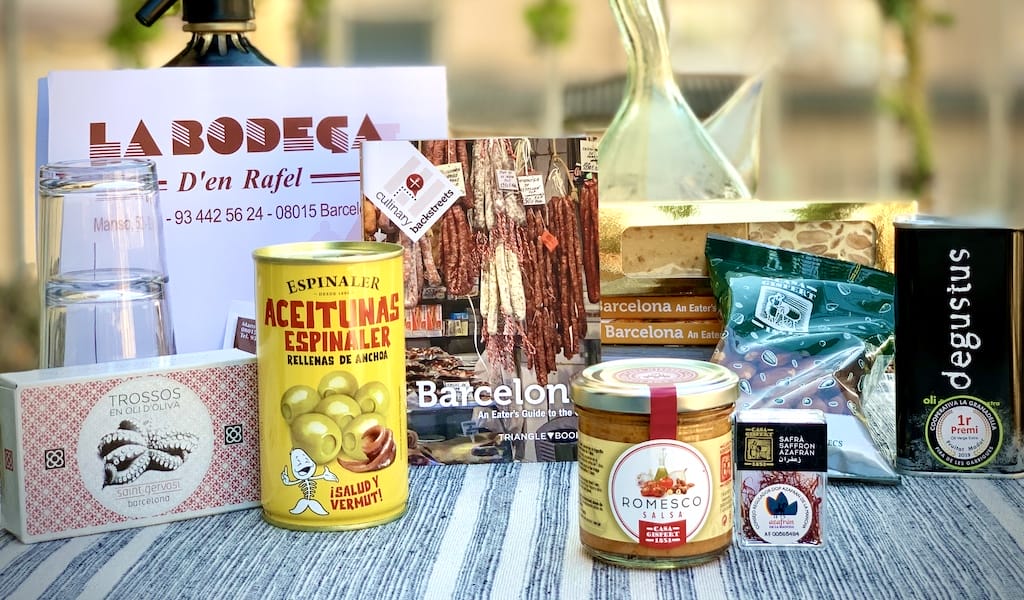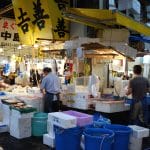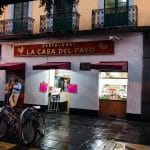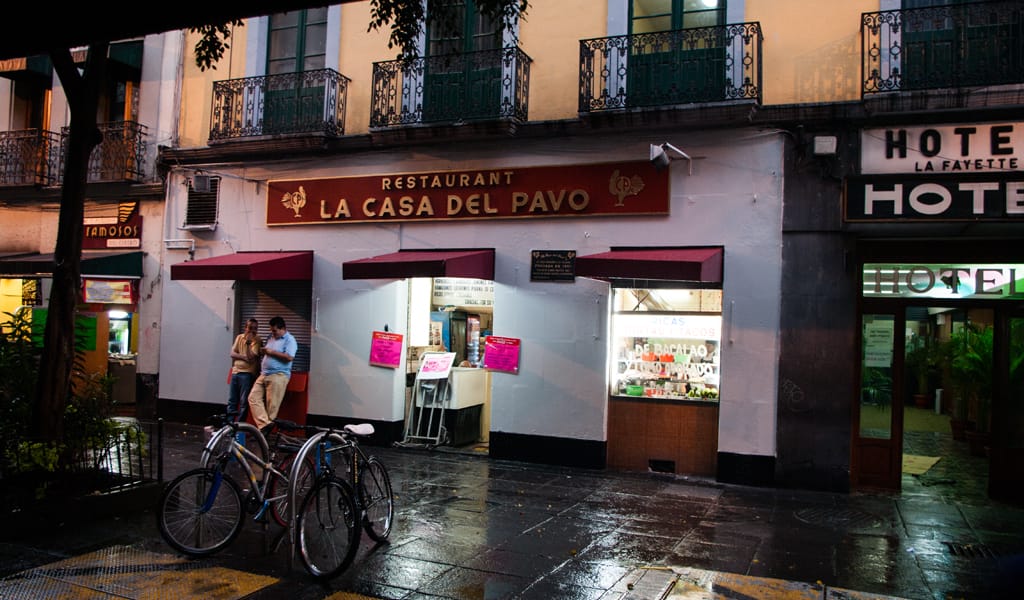Since we’re a company built around the idea that, when traveling, the stomach serves as the best compass, it’s no surprise that we believe that culinary experiences are the best kind of gift. And while we would be very happy to see you and your loved ones on one of our culinary walks or trips (you can purchase gift certificates here) we also want to use our annual gift guide to showcase some of our favorite products and treasures across our cities. From serious kitchen tools to adorably frivolous snacks and knick knacks, our correspondents, guides and editors have recommended a range of items that they eat, use or just love – often made by people they know.
While we can’t guarantee to cover every personality with our gift suggestions, we can promise a relatively short list of highly selective, quality products that are affiliate-link free and Culinary Backstreets-approved. Many of the items are featured in our shop or in stories that we’ve published, and we worked our hardest to connect you directly with producers – while we weren’t always successful, we did manage to avoid Amazon entirely.
During the height of the pandemic, at a time when it was difficult to make connections between travelers and our local heroes, we also put together a series of boxes from our cities featuring some of our favorite bites and ingredients. In addition to this year’s recommended products, we have brought a handful of our city boxes back for the 2023 holiday season (which you can find in our shop alongside our books). We hope that with every purchase we can bring the flavor of these cities into your home and kitchen, as well as support the essential work of our beloved chefs and artisans.
Now, without further ado, here is CB’s 2023 gift guide:
Athens
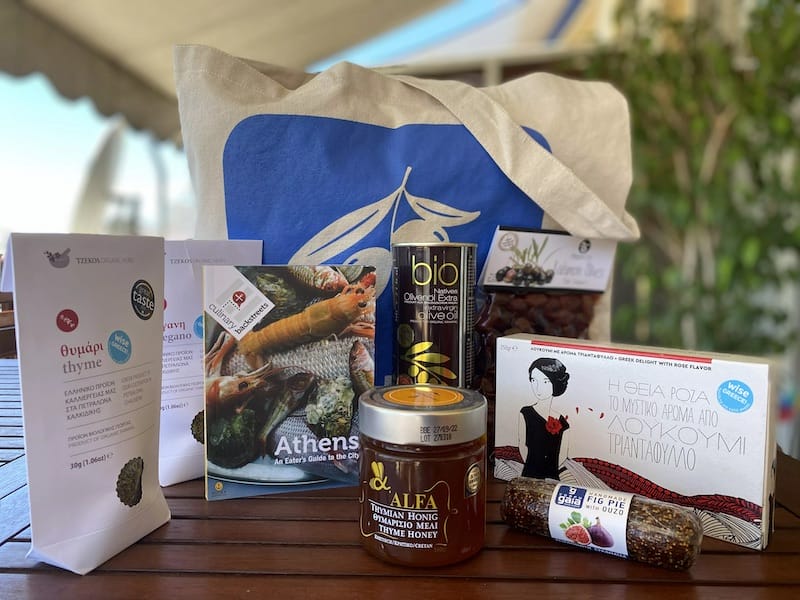
Backstreet Plaka Box
Our Backstreet Plaka Box, like our food tour in this ancient district, uncovers the culinary diamonds in the touristy rough. Among the specialty products included – all made by small producers from across Greece – is a can of Liokarpi, an award-winning olive oil from Crete made using the robustly-flavored Koroneiki variety of olives; oregano and thyme from Tzekos, an organic herb grower in northern Greece’s Chalkidiki region; and sykomaida, a dried fig cake made with a touch of ouzo that’s a traditional specialty of Corfu. Order here. –Culinary Backstreets
“Salt of the Earth”
 I’m profoundly honored to be able to share the recent global release of my cookbook, “Salt of the Earth: Secrets and Stories from a Greek Kitchen.” Unveiled this past spring, this labor of love is more than just a collection of recipes. We sail through the wine dark sea of Greek cuisine, its ancient history and modern-day evolution, using its main ingredients as guide posts – including chapters on the venerable olive tree and the sacrosanct vine, and more. I’ve endeavored to weave a narrative that showcases not only the formation of much-loved recipes but also the distinct character of Greece’s regions and the myriad of influences from cultures that have touched our shores through the ages. Outside of the dozens of recipes (for all levels of cooks and dietary restrictions) and evocative photographs by the talented Manos Chatzikonstantis, you’ll find a depth of knowledge about Greece’s native products, how best to use them and the intricate techniques that breathe life into our dishes. Order here. –Carolina Doriti
I’m profoundly honored to be able to share the recent global release of my cookbook, “Salt of the Earth: Secrets and Stories from a Greek Kitchen.” Unveiled this past spring, this labor of love is more than just a collection of recipes. We sail through the wine dark sea of Greek cuisine, its ancient history and modern-day evolution, using its main ingredients as guide posts – including chapters on the venerable olive tree and the sacrosanct vine, and more. I’ve endeavored to weave a narrative that showcases not only the formation of much-loved recipes but also the distinct character of Greece’s regions and the myriad of influences from cultures that have touched our shores through the ages. Outside of the dozens of recipes (for all levels of cooks and dietary restrictions) and evocative photographs by the talented Manos Chatzikonstantis, you’ll find a depth of knowledge about Greece’s native products, how best to use them and the intricate techniques that breathe life into our dishes. Order here. –Carolina Doriti
Cretan Carob Rusks
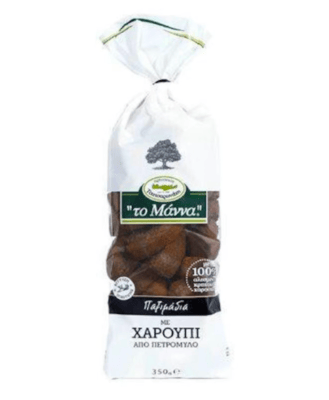
Rusks, or paximadia, have held a place in Greek culinary history since ancient times. These double-baked breads, made from various grains and seeds, are a favorite on Crete, especially when made from barley and carob. Renowned for its natural sweetness and nutritional value, carob seed boasts more calcium than milk, alongside other vital vitamins, minerals and antioxidants. While rusks frequently substitute for bread in Greece, they also find their way into salads or are transformed into breadcrumbs in many recipes, even serving as a cake base in lieu of cookies. You can read more about this building block of Greek cuisine here. For a simple culinary experience, consider breaking them into small pieces and tossing them into a salad with tomatoes, onions, capers, dried oregano and a drizzle of quality olive oil. Order here. –Carolina Doriti
“Athens: An Eater’s Guide to the City”
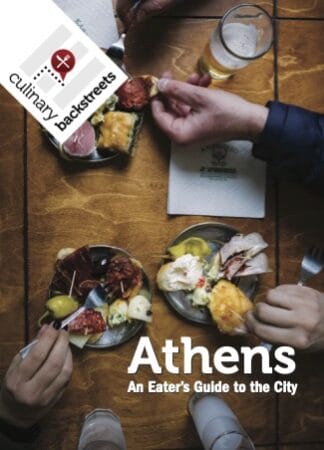
This edition in our “An Eater’s Guide to the City” series, updated this year, isn’t just a directory. It’s an insider journey through Athens’s culinary heritage, penned by our resident correspondents who know and love their city. The 70+ spots featured in our Athens book represent the best of the local food scene, from old-school dairy bars serving real Greek yogurt to rollicking seafood tavernas and specialty shops where you can load up on Greek olive oil and herbs. It’s richly detailed and still compact, a perfect pocket companion for anyone making their way to Athens. Order here. –Culinary Backstreets
Barcelona
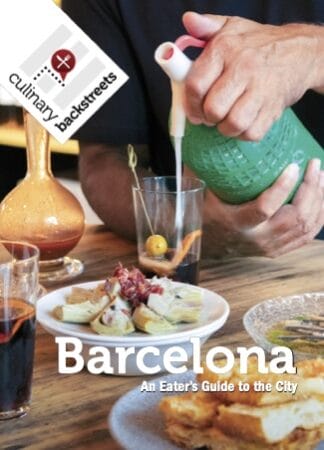
“Barcelona: An Eater’s Guide to the City”
Updated in November of this year, our revamped Barcelona edition of “An Eater’s Guide to the City” is the holy grail for food-loving travelers and locals alike. Inside this bite-sized book are more than 100 spots chosen by our trusty Barcelona team, featuring the best of the city’s local and neighborhood culinary scene, from decades-old churros stands to out-of-the-way tapas bars and specialty shops with the finest, most delectable Spanish ham and Catalan cheeses. Preorder the updated edition here. –Culinary Backstreets

Barrio Box: Gràcia, Born, Sants
When the afternoon hora de vermut comes around, our Barrio Box gives you almost everything you need to partake as if you’re in Barcelona (sadly we can’t ship the vermouth itself – but we include a list of recommended bottles!). It features some of the very best bites from the neighborhoods that we visit on our food tours, including artisanal tinned seafood from Entrelatas, a favorite conservas shop in Grácia; Llargueta almonds roasted at Casa Gispert, a food shop in the Born neighborhood that opened in 1851 and has one of Europe’s oldest nut roasters; and heavenly olives in anchovy paste from L’espinaler, a Catalan brand that is synonymous with vermouth culture. Order here. –Culinary Backstreets
100% Jamón Ibérico
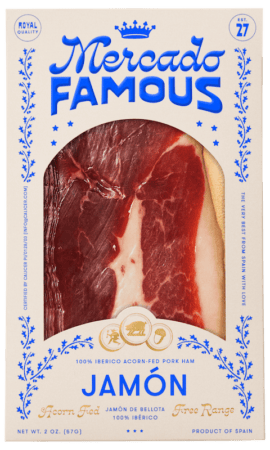 Walking around Barcelona with a ham leg by your side is a special sensation, only comparable to strolling with a giant bouquet of flowers or a handful of balloons. You feel the kind of happiness and satisfaction that’ll have you sauntering the streets with a smile on your face. Perhaps it’s a primitive sensation for humans, having fought for food for thousands of years – and for me it can’t get more primally satisfying than lugging around a leg of Spanish jamón, especially the 100% ibérico we write about so much.
Walking around Barcelona with a ham leg by your side is a special sensation, only comparable to strolling with a giant bouquet of flowers or a handful of balloons. You feel the kind of happiness and satisfaction that’ll have you sauntering the streets with a smile on your face. Perhaps it’s a primitive sensation for humans, having fought for food for thousands of years – and for me it can’t get more primally satisfying than lugging around a leg of Spanish jamón, especially the 100% ibérico we write about so much.
When sliced thinly, this national treasure of a ham melts in the mouth, boasting a lingering buttery flavor and a special complexity derived from the Iberian pig’s natural diet in the dehesas (holm oak forests) of Castilla León. You can preorder slices of quality 100% ibérico in the US from Mercado Famous, or even go for that primal sensation with a whole leg of their serrano. Our recommendation is to pair it with a bottle of cava or any other sparkling wine. Order here. –Paula Mourenza
D.O. Valencia Chufa Nuts
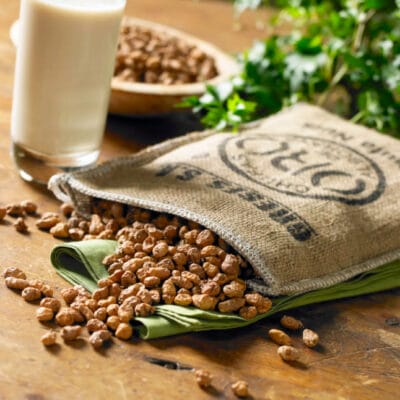 Ancient Egyptian pharaohs were often buried with their most treasured possessions and the finest food for the afterlife. Among the many items discovered in their tombs were tiger nuts, chufas in Spanish and xufas in Catalan. This Mediterranean crop was introduced to the Spanish diet by the Arabs in the 8th century and is now primarily cultivated in Valencia. It’s most popularly consumed as orxata, an Iberian precursor to the rice-based Mexican horchata. Despite their name, tiger nuts are tubers, akin to “earth almonds,” from the Cyperus esculentus plant. As a superfood, they’re rich in healthy oils, magnesium, iron and fiber. You can peel them and eat them raw, grind them into a flour for use in desserts, or soak them to make the famous Valencia orxata, as we like to do. Order here, (orxata recipe included!). –Paula Mourenza
Ancient Egyptian pharaohs were often buried with their most treasured possessions and the finest food for the afterlife. Among the many items discovered in their tombs were tiger nuts, chufas in Spanish and xufas in Catalan. This Mediterranean crop was introduced to the Spanish diet by the Arabs in the 8th century and is now primarily cultivated in Valencia. It’s most popularly consumed as orxata, an Iberian precursor to the rice-based Mexican horchata. Despite their name, tiger nuts are tubers, akin to “earth almonds,” from the Cyperus esculentus plant. As a superfood, they’re rich in healthy oils, magnesium, iron and fiber. You can peel them and eat them raw, grind them into a flour for use in desserts, or soak them to make the famous Valencia orxata, as we like to do. Order here, (orxata recipe included!). –Paula Mourenza
Istanbul
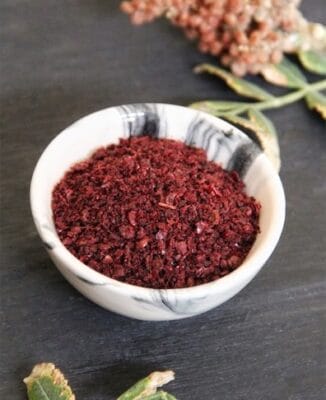 Ground Antakya Sumac
Ground Antakya Sumac
Amidst the dizzying array of spices you can find in a Turkish market, sumac is a stand-out. Its deep red hue belies a tangy, lemon-like flavor that brightens up salads and adds a sweet note to tea blends. Greatly cherished in the Ottoman kitchen, this versatile spice finds its roots deep in Anatolian cuisine, often sprinkled on meze dishes or blended into marinades.
The sumac we champion is sourced from Antakya, a supremely culinary city recently devastated by the February earthquakes that hit Eastern Turkey and Syria. We discovered this particular seller (Leap Natural, which sells sustainable products from women producers) through the Local Makers Solidarity Network, which we previously spotlighted. The network is a searchable index of local and boutique producers in the 11 Turkish provinces affected by the earthquakes, with details about what they have to offer, if they are actively selling and how to contact them. You can arrange international shipping through many of the producers by reaching out to them directly. Order here. –Tas Anjarwalla
Salt and Pepper Mills
 These petite salt and pepper grinders draw inspiration from the brass mills that still stud the Grand Bazaar. Traditionally used to grind Turkish coffee down to a powder (even finer than espresso), the metal parts of these old-school mills pack more punch than the plastic you’ll find in today’s cheap hand grinders. Personally, I think this pretty tool makes for an even better spice mill, and these mini versions as salt and pepper grinders for the table are just brilliant. Order here. –Tas Anjarwalla
These petite salt and pepper grinders draw inspiration from the brass mills that still stud the Grand Bazaar. Traditionally used to grind Turkish coffee down to a powder (even finer than espresso), the metal parts of these old-school mills pack more punch than the plastic you’ll find in today’s cheap hand grinders. Personally, I think this pretty tool makes for an even better spice mill, and these mini versions as salt and pepper grinders for the table are just brilliant. Order here. –Tas Anjarwalla
“Istanbul Eats: Exploring the Culinary Backstreets”
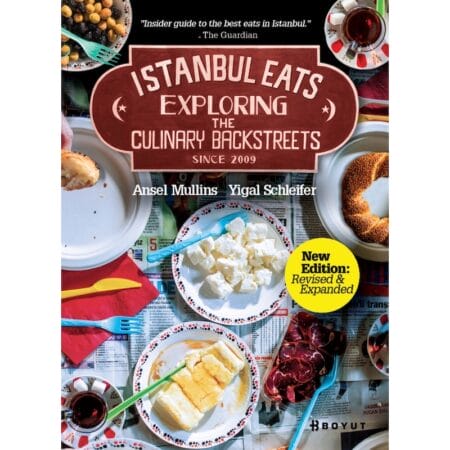
It’s hard to believe, but our Istanbul Eats book has now been in print for over ten years. That doesn’t mean we haven’t been resting on our laurels. In fact, we published a completely revised and expanded 9th edition last year. Like previous editions, this one explores all of Istanbul through its backstreets eateries, from hidden kebab joints near the Grand Bazaar to fish shacks up the Bosphorus. Order here. -Culinary Backstreets
Lisbon

“Lisbon: An Eater’s Guide to the City”
We’ve been exploring the culinary backstreets of Lisbon since 2015, gaining an intimate understanding of the city’s wondrous food scene in the process. After all these years of writing about where to eat in Lisbon, we compiled our material for a guidebook published in March 2023. Going deep into Lisbon’s neighborhoods and their local eateries, the book covers everything from humble tascas to some of our favorite more refined spots, and everything in between (including some culinary day trips out of the city). With this book in hand, you’ll have a good reason to get lost in Lisbon. Order here. –Culinary Backstreets
Pastéis de Nata Baking Kit
Pastel de nata, Portugal’s iconic egg custard tart, owes much of its global fame to the historic Pasteis de Belém café, where the time-honored recipe has entranced locals and travelers for generations (our story here). Recreate Lisbon’s famous sweet treat with this simple baking kit. It makes it easy to tackle what is otherwise a varsity-level baking job, and even includes the metal molds required to make this world-class dessert. Order here. –Austin Bush
Piri Piri Sauce
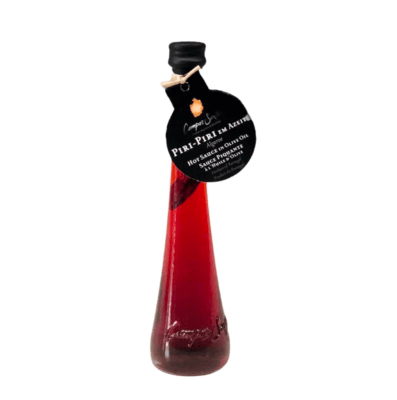
A staple condiment in kitchens and restaurants throughout Lisbon, piripiri originates from Africa, with its roots especially tied to the former Portuguese colonies of Angola and Mozambique. The term “piripiri” can refer to the small African bird’s eye chili and the sauce or oil it produces (read more here). We recommend using the sauce to elevate your chicken dishes and roast meats, or to replicate the unforgettable garlic and piripiri prawns you may have sampled in Lisbon or Porto. It also beautifully complements fish stews and seafood rice dishes like arroz de marisco. This particular version, crafted in the Algarve region in the south of Portugal, has a touch of whisky in the mix. While its spicy kick isn’t immediate, rest assured, it’s potent and will leave an impression. Order here. –Célia Pedroso
Los Angeles
Fugetsu Do Mochi Box
 Fruit pulp, sugar glaze, marshmallow, tofu powder – these are only some of the many textures you can find in this eye-catching 20-piece box of mochi. For 120 years, Fugetsu-Do has been hand-crafting mochi in the heart of Little Tokyo, an area that has repped the Japanese-American community in Los Angeles since the early-20th century. The confectionery sits on the last remaining historic block of the neighborhood, which once stretched for three miles before the forced internment of Japanese-Americans during World War II. One of a handful of businesses that survived the war, Fugetsu-Do offers a mix of old-school and contemporary flavors: Don’t miss out on the traditional uguisu (red bean paste dusted with roasted soybean powder) or the picture-worthy persimmon-shaped kaki. Order here. –Ulysses James Salcido III
Fruit pulp, sugar glaze, marshmallow, tofu powder – these are only some of the many textures you can find in this eye-catching 20-piece box of mochi. For 120 years, Fugetsu-Do has been hand-crafting mochi in the heart of Little Tokyo, an area that has repped the Japanese-American community in Los Angeles since the early-20th century. The confectionery sits on the last remaining historic block of the neighborhood, which once stretched for three miles before the forced internment of Japanese-Americans during World War II. One of a handful of businesses that survived the war, Fugetsu-Do offers a mix of old-school and contemporary flavors: Don’t miss out on the traditional uguisu (red bean paste dusted with roasted soybean powder) or the picture-worthy persimmon-shaped kaki. Order here. –Ulysses James Salcido III
Ara the Rat Loquat Rugby Shirt
 Everything about Ara the Rat is playful, from the company name (a riff on Mount Ararat, the snow-capped mountain sacred to Armenians), to its colorful graphic tees and products. These all sport original illustrations inspired by the shared experience of Armenian culture, especially those of the diaspora – and Los Angeles is home to the largest Armenian population in the United States. Just as many Armenian families have a picture of Mount Ararat somewhere around the house, you can anticipate kitchens full of loquats, nor ashkhar (literally “new world”), from spring to fall. Los Angeles also boasts an abundance of loquat trees (which are actually native to China), making this shirt another playful creation from Ara the Rat. Order here. –Ulysses James Salcido III
Everything about Ara the Rat is playful, from the company name (a riff on Mount Ararat, the snow-capped mountain sacred to Armenians), to its colorful graphic tees and products. These all sport original illustrations inspired by the shared experience of Armenian culture, especially those of the diaspora – and Los Angeles is home to the largest Armenian population in the United States. Just as many Armenian families have a picture of Mount Ararat somewhere around the house, you can anticipate kitchens full of loquats, nor ashkhar (literally “new world”), from spring to fall. Los Angeles also boasts an abundance of loquat trees (which are actually native to China), making this shirt another playful creation from Ara the Rat. Order here. –Ulysses James Salcido III
Marseille
“Taste the World in Marseille: Marseille Cuisine by the Marseillais”
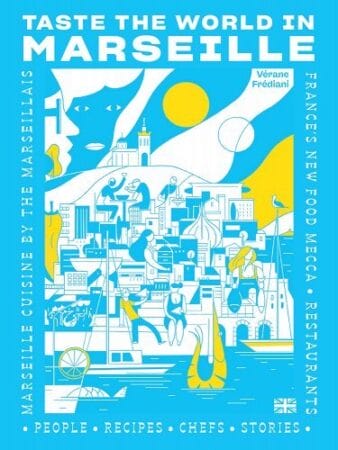 In this feast of a book, Marseille native and gourmand Vérane Frédiani captures a portrait of the port city through its food and culinary figures. I had the pleasure of translating this terrific tome, making it the first book in English about Marseille cuisine and culture that truly embodies the city’s rich diversity – an enticing mix of Mediterranean, Provençal and multicultural influences. Like Culinary Backstreet’s raison d’être across the globe, Taste the World in Marseille gives equal measure to both food and the chefs and culinary artisans who make it, for a deeper understanding of this singular city. Part cookbook, part guidebook, it’s an ideal gift to whet anyone’s appetite for a future visit, or as a souvenir for those who’ve had the chance to visit. Frédiani writes that the “future of French gastronomy is being written here.” Even more reason to pick up a copy. Pre-order here. –Alexis Steinman
In this feast of a book, Marseille native and gourmand Vérane Frédiani captures a portrait of the port city through its food and culinary figures. I had the pleasure of translating this terrific tome, making it the first book in English about Marseille cuisine and culture that truly embodies the city’s rich diversity – an enticing mix of Mediterranean, Provençal and multicultural influences. Like Culinary Backstreet’s raison d’être across the globe, Taste the World in Marseille gives equal measure to both food and the chefs and culinary artisans who make it, for a deeper understanding of this singular city. Part cookbook, part guidebook, it’s an ideal gift to whet anyone’s appetite for a future visit, or as a souvenir for those who’ve had the chance to visit. Frédiani writes that the “future of French gastronomy is being written here.” Even more reason to pick up a copy. Pre-order here. –Alexis Steinman
Maison Empereur Pie Bag
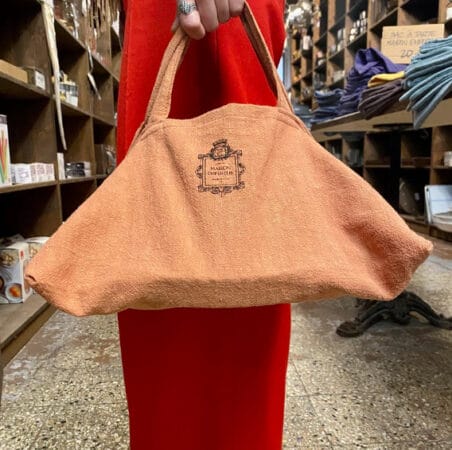 In France, une tarte can be sweet (lemony tarte au citron) or savory (bacon-y quiche Lorraine), making it a perfect treat for any occasion. Across the world, bringing tarts to a picnic or a dinner party “c’est pas de la tarte” (“is not a piece of cake.”) Thankfully, there are sac à tartes. With their wide bottom and nifty handle, these pie bags make toting your tarts and cakes a cinch. Our favorite comes from Marseille’s Maison Empereur, France’s oldest hardware store that teems with 60,000 heritage goods. Emblazoned with the Empereur family crest, they are crafted in an array of culinary colors (think aubergine and saffron) and made from très French washed linen (over 80% of Europe’s production is in France). Chic, practical and oh-so-portable, the sac à tarte brings a piece of France to your home – and peace of mind when transporting your home-cooked creations. Order here. –Alexis Steinman
In France, une tarte can be sweet (lemony tarte au citron) or savory (bacon-y quiche Lorraine), making it a perfect treat for any occasion. Across the world, bringing tarts to a picnic or a dinner party “c’est pas de la tarte” (“is not a piece of cake.”) Thankfully, there are sac à tartes. With their wide bottom and nifty handle, these pie bags make toting your tarts and cakes a cinch. Our favorite comes from Marseille’s Maison Empereur, France’s oldest hardware store that teems with 60,000 heritage goods. Emblazoned with the Empereur family crest, they are crafted in an array of culinary colors (think aubergine and saffron) and made from très French washed linen (over 80% of Europe’s production is in France). Chic, practical and oh-so-portable, the sac à tarte brings a piece of France to your home – and peace of mind when transporting your home-cooked creations. Order here. –Alexis Steinman
Mexico City
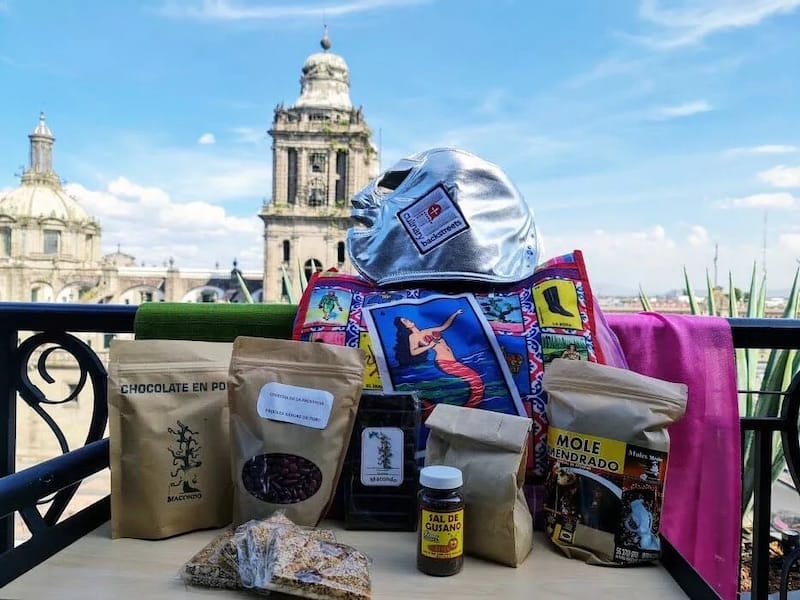
Backstreet Mexico City Box
Filled with products from the people who are part of our Mexico City tours and trips, our Backstreet Mexico City Box showcases the many layers of this incredibly diverse metropolis. Like the Almendrado mole from the family-run Moles México in Milpa Alta, a village-like area on the southern edge of Mexico City (while in town we also found a source for heirloom beans that are rarely seen outside of Milpa Alta’s markets). And the cacao treats from the family-run Chocolatería Macondo, located near the site of the 2,000-year-old Teotihuacan pyramids, including a cacao-rich bar for baking or nibbling on and a package of powdered chocolate to make hot or cold drinks. Order here. –Culinary Backstreets
Cazuela Casserole Dish
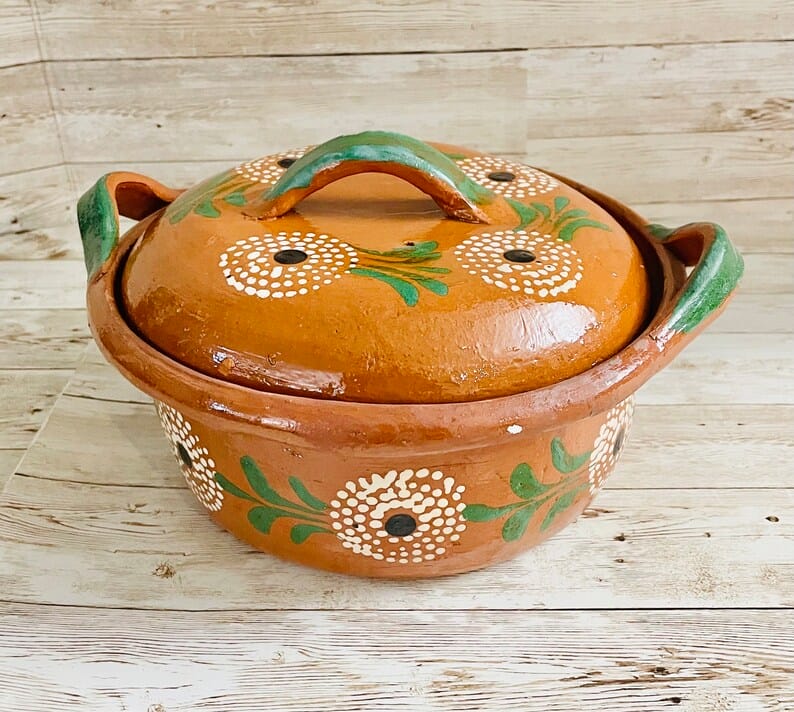 Earthenware pottery has long been a favorite in Mexican cooking. The cazuela, a type of round casserole dish, is used for making traditional meals that are as rich in flavor as they are in cultural significance. The slow, even heat provided by terra cotta is ideal for simmering moles, stews and other cornerstone recipes of Mexican cuisine. These dishes are often passed down through generations, and are a common site in market shops. Order here. –Culinary Backstreets
Earthenware pottery has long been a favorite in Mexican cooking. The cazuela, a type of round casserole dish, is used for making traditional meals that are as rich in flavor as they are in cultural significance. The slow, even heat provided by terra cotta is ideal for simmering moles, stews and other cornerstone recipes of Mexican cuisine. These dishes are often passed down through generations, and are a common site in market shops. Order here. –Culinary Backstreets
Abasolo Whisky
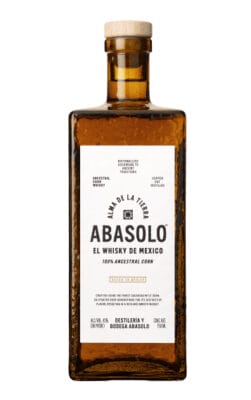
Distilled at 2,000 meters above sea level in central Mexico, this local whisky is crafted from an heirloom corn variety called cacahuazintle. Scarcely grown outside its native land, cacahuazintle imparts a distinctive flavor profile, as well as notes of honey, vanilla, chamomile tea and leather. It’s a favorite of local whisky aficionados and the city’s top bartenders – it makes for a refined component in crafted cocktails. I like the exquisite, easy-to-identify note of the cacahuazintle hominy myself, and think Abasolo straight or with a single ice cube is just perfect. Order here. –Paco de Santiago
Naples
Di Martino Pasta di Gragnano San Carlo Gold Tin Box
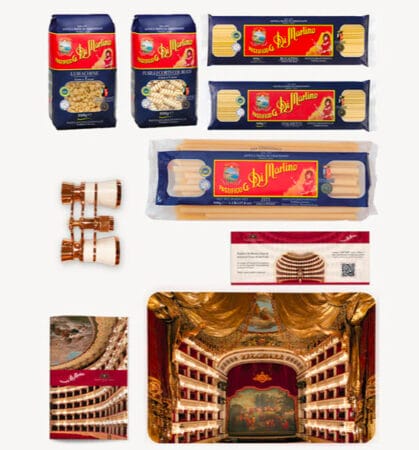 Gragnano, a hill town part of the Metropolitan City of Naples on the way towards Amalfi and its coast, is famous for the excellent PGI pasta, made with durum wheat and the spring water flowing from the nearby Lattari mountains, bronze-drawn and slowly dried. Even though the flour mills that once scattered the valley and the open-air drying rods are no longer in use, local brands still produce some of the best pasta in Italy, in a virtually endless number of shapes. Di Martino, which never fails to celebrate Italian and Neapolitan culture and its food, has created a giftable tin in honor of the San Carlo Theater, the world’s oldest active opera house. Inside are five 1lb packs of PGI Gragnano pasta, a ticket to stream three shows at the theater and a beautiful pair of opera binoculars. Order here. –Luciana Squadrilli
Gragnano, a hill town part of the Metropolitan City of Naples on the way towards Amalfi and its coast, is famous for the excellent PGI pasta, made with durum wheat and the spring water flowing from the nearby Lattari mountains, bronze-drawn and slowly dried. Even though the flour mills that once scattered the valley and the open-air drying rods are no longer in use, local brands still produce some of the best pasta in Italy, in a virtually endless number of shapes. Di Martino, which never fails to celebrate Italian and Neapolitan culture and its food, has created a giftable tin in honor of the San Carlo Theater, the world’s oldest active opera house. Inside are five 1lb packs of PGI Gragnano pasta, a ticket to stream three shows at the theater and a beautiful pair of opera binoculars. Order here. –Luciana Squadrilli
Friarielli in EVOO
 Italian food geography and nomenclature can be tricky. Across the country, you will find the same produce with different names, or find similar names for totally different foods. For example, the Neapolitan friarielli (a type of broccoli rabe with a very pleasant bitter finish) only grows in the Campania region. It’s not to be confused with the very similar but less tender cime di rapa (broccoli rabe or turnip greens, from the same botanical family) used in Puglia to prepare orecchiette, nor with the sweet green chili pepper Italians call friggitelli (but sometimes, also, friarielli!). The Neapolitan rabe are usually eaten fresh in the winter season – pan-fried with extra virgin olive oil, garlic and a bit of hot chili pepper – accompanying fresh sausages made of coarse-cut pork meat seasoned and packed into a natural casing. Salsiccia e friarielli is a staple of the Neapolitan marenna, or light lunch, eaten between two slices of rustic bread or as a popular pizza topping. To enjoy the delicate greens year round (or in a faraway land), jarred friarielli is your best bet. These ones made by Maida, a farm near Cilento National Park, are traditionally seasoned and delicious. Order here. –Luciana Squadrilli
Italian food geography and nomenclature can be tricky. Across the country, you will find the same produce with different names, or find similar names for totally different foods. For example, the Neapolitan friarielli (a type of broccoli rabe with a very pleasant bitter finish) only grows in the Campania region. It’s not to be confused with the very similar but less tender cime di rapa (broccoli rabe or turnip greens, from the same botanical family) used in Puglia to prepare orecchiette, nor with the sweet green chili pepper Italians call friggitelli (but sometimes, also, friarielli!). The Neapolitan rabe are usually eaten fresh in the winter season – pan-fried with extra virgin olive oil, garlic and a bit of hot chili pepper – accompanying fresh sausages made of coarse-cut pork meat seasoned and packed into a natural casing. Salsiccia e friarielli is a staple of the Neapolitan marenna, or light lunch, eaten between two slices of rustic bread or as a popular pizza topping. To enjoy the delicate greens year round (or in a faraway land), jarred friarielli is your best bet. These ones made by Maida, a farm near Cilento National Park, are traditionally seasoned and delicious. Order here. –Luciana Squadrilli
New Orleans
Bernard’s Pralines
 Pralines are a Southern American sweet staple, with a recipe that’s been around long enough to become local legend. These caramelized bites trace back to the French settlers who brought the concept over, which was then perfected by the Creole cooks, often women of color, who substituted cheaper, more readily available pecans for the European almonds. Adding butter and cream to cane sugar is another twist that gave birth to the pralines we know today: a creamy, sugary confection that’s become synonymous with New Orleans’s confluence of cultures. Black-owned New Orleans confectionary Bernard’s Candy has been a part of this tradition for almost two decades, selling its pralines nationwide by the dozen. They’ve got that classic crunch of pecans, a heavenly caramelized aroma that takes you straight to the streets of the French Quarter and a creamy sweetness that lingers on the tongue. Order here. –Culinary Backstreets
Pralines are a Southern American sweet staple, with a recipe that’s been around long enough to become local legend. These caramelized bites trace back to the French settlers who brought the concept over, which was then perfected by the Creole cooks, often women of color, who substituted cheaper, more readily available pecans for the European almonds. Adding butter and cream to cane sugar is another twist that gave birth to the pralines we know today: a creamy, sugary confection that’s become synonymous with New Orleans’s confluence of cultures. Black-owned New Orleans confectionary Bernard’s Candy has been a part of this tradition for almost two decades, selling its pralines nationwide by the dozen. They’ve got that classic crunch of pecans, a heavenly caramelized aroma that takes you straight to the streets of the French Quarter and a creamy sweetness that lingers on the tongue. Order here. –Culinary Backstreets
Jambalaya & Gumbo Meal Kit
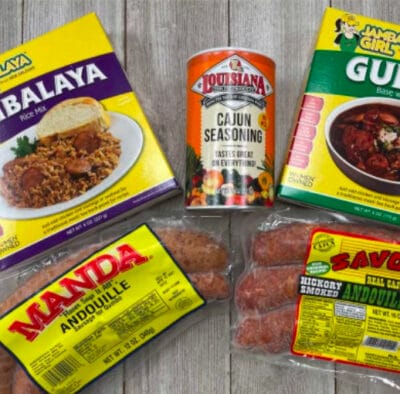
Jambalaya and gumbo are not just dishes – they’re culinary stories told in pots simmering across New Orleans. Like many of the city’s meals, this celebration of cultural crossroads also brings people together, whether for football season or Mardi Gras. This straightforward kit packs the essentials for these two dishes: a gumbo base with roux, jambalaya rice mix, Cajun seasoning, and andouille sausage. Just add chicken, and you’re set to recreate a New Orleans feast that’s steeped in flavor and tradition. You can also use our recipe for jambalaya to add a made-from-scratch touch. Order here. -Culinary Backstreets
Oaxaca
Agave Worm Salt
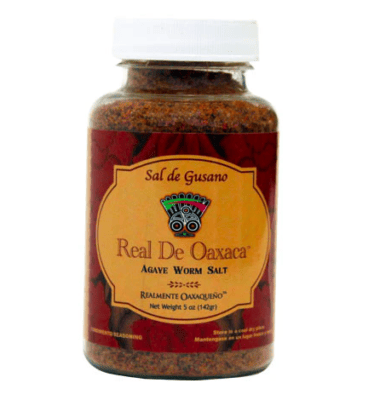
Real de Oaxaca’s Sal de Gusano brings a traditional Oaxacan kick to your kitchen. Made with sea salt, toasted agave worms and a mix of dried chilies, this family recipe has been passed down since 1921. Use it to add a smoky, spicy twist to fruits, veggies or a glass of mezcal, as it’s typically used. Order here. -Culinary Backstreets
Michelada Party Pack
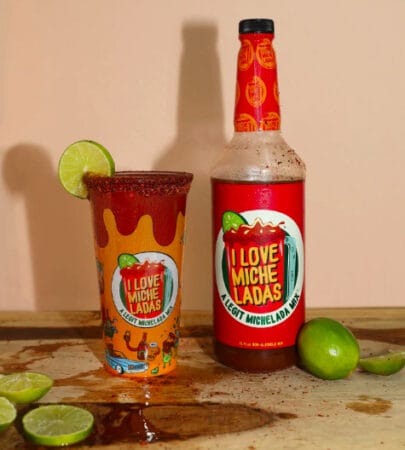
This party pack offers a quick and easy dip into Mexico’s street-side michelada culture. A beloved Mexican concoction, micheladas are a blend of beer and savory and spicy ingredients, served in cups rimmed with salt and served chilled. This gift simplifies the process, with pre-rimmed cups that’ll provide that spicy, tangy kick that Oaxacans love so much. Order here. -Culinary Backstreets
Palermo
Sicilian Orange Marmalade
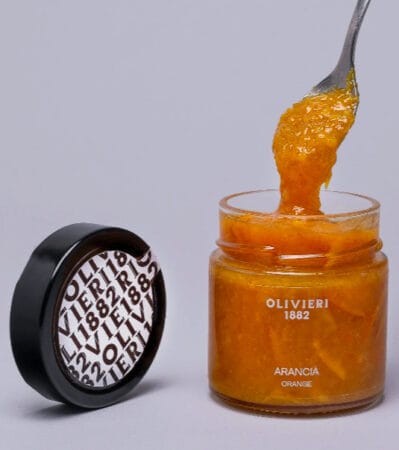 In the heart of Sicily, fresh citrus has been transformed into marmalades for centuries, whether for slathering over a slice of bread at the table, or for use in the world-renowned Sicilian patisserie. The story of the Sicilian orange goes far back: Introduced by the Arabs between the 9th and 11th centuries AD, citrus fruits not only adorned fanciful gardens but flourished in Sicily’s fertile soil and agreeable climate. This gave birth to the widespread love for these sun-kissed fruits across the Mediterranean, especially in the form of Sicilian orange marmalade. Order here. –Francesco Cipriano
In the heart of Sicily, fresh citrus has been transformed into marmalades for centuries, whether for slathering over a slice of bread at the table, or for use in the world-renowned Sicilian patisserie. The story of the Sicilian orange goes far back: Introduced by the Arabs between the 9th and 11th centuries AD, citrus fruits not only adorned fanciful gardens but flourished in Sicily’s fertile soil and agreeable climate. This gave birth to the widespread love for these sun-kissed fruits across the Mediterranean, especially in the form of Sicilian orange marmalade. Order here. –Francesco Cipriano
Veniero’s Cannoli
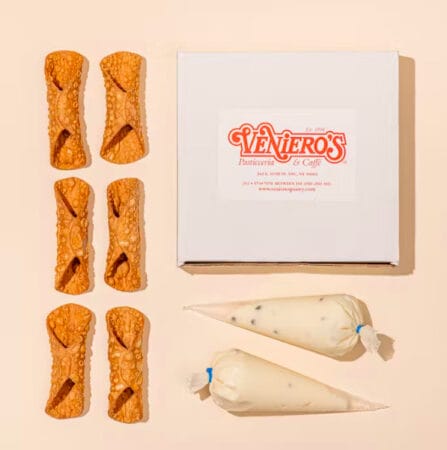 The cannolo is not only one of Sicily’s best-known pastries, but a true icon of the island. While it’s tempting to simply reference Coppola’s The Godfather, (“Leave the gun, take the cannoli”), another tale really underscores just what the cannolo means to Sicily: In 2014, three amateur scientists launched a cannolo into the stratosphere, dubbing it the “Sicilian Space Program.” If you’re US-bound, however, no need to wait for them to come falling from the sky. With a legacy spanning 125+ years, fourth-generation Italian pasticceria Veniero’s is one of New York’s only remaining Old World Italian bakeries, and many of the original recipes are still in use to this day. You can order Veniero’s cannoli and expect freshly-crisped shells and rich ricotta – packaged separately so that each bite is freshly crafted. Order here. –Francesco Cipriano
The cannolo is not only one of Sicily’s best-known pastries, but a true icon of the island. While it’s tempting to simply reference Coppola’s The Godfather, (“Leave the gun, take the cannoli”), another tale really underscores just what the cannolo means to Sicily: In 2014, three amateur scientists launched a cannolo into the stratosphere, dubbing it the “Sicilian Space Program.” If you’re US-bound, however, no need to wait for them to come falling from the sky. With a legacy spanning 125+ years, fourth-generation Italian pasticceria Veniero’s is one of New York’s only remaining Old World Italian bakeries, and many of the original recipes are still in use to this day. You can order Veniero’s cannoli and expect freshly-crisped shells and rich ricotta – packaged separately so that each bite is freshly crafted. Order here. –Francesco Cipriano
Porto
Ach. Brito Soap
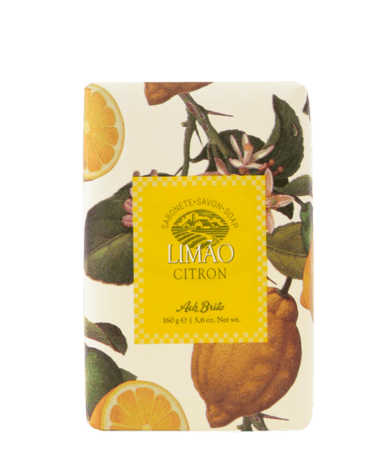
Since moving to Portugal, Ach. Brito’s scented soaps have become my go-to. The company has been making soaps and other products in Porto since 1918 – a legacy evident in the beautiful packaging. I even have a seasonal rotation: plum in the summer and lemon in the winter months. Order here. –Austin Bush
Linguiça Sausage
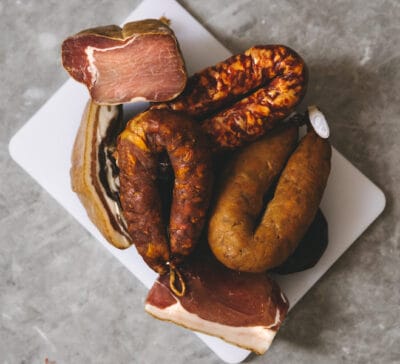 Linguiça is a versatile Portuguese sausage, often slimmer and milder than chouriço. It’s savored as a grilled starter, allowing some fat to melt away, or as a key ingredient in hearty bean stews. Infused with flavors of garlic, white pepper and red pepper paste, it can range from mildly spiced to fiery. If you’ve ever indulged in Porto’s iconic francesinha – a decadent sandwich stuffed with various meats and smothered in melted cheese (think croque monsieur on steroids) – you’ve tasted linguiça. Recreate this heart-stopping favorite at home and impress your friends! Order here. –Célia Pedroso
Linguiça is a versatile Portuguese sausage, often slimmer and milder than chouriço. It’s savored as a grilled starter, allowing some fat to melt away, or as a key ingredient in hearty bean stews. Infused with flavors of garlic, white pepper and red pepper paste, it can range from mildly spiced to fiery. If you’ve ever indulged in Porto’s iconic francesinha – a decadent sandwich stuffed with various meats and smothered in melted cheese (think croque monsieur on steroids) – you’ve tasted linguiça. Recreate this heart-stopping favorite at home and impress your friends! Order here. –Célia Pedroso
Queens
Maxi’s Noodle Chili Oil
 At Maxi’s Noodle, in Flushing, Maxi Lau O’Keefe and her team hand-fashion hefty dumplings, wontons and fish balls – each is large enough to require two bites – that accompany lush duck-egg noodles. All these are delicious on their own, but no table setting would be complete without red vinegar, white pepper and Maxi’s housemade làjiāo yóu, or chili oil. The peppers that fuel this potent condiment certainly pack the heat; too big a spoonful, it’s said, can set tastebuds aflame! Not only is a small dab much safer, but the jar might even last long enough to arrange a visit to the noodle shop itself. Order here. –Dave Cook
At Maxi’s Noodle, in Flushing, Maxi Lau O’Keefe and her team hand-fashion hefty dumplings, wontons and fish balls – each is large enough to require two bites – that accompany lush duck-egg noodles. All these are delicious on their own, but no table setting would be complete without red vinegar, white pepper and Maxi’s housemade làjiāo yóu, or chili oil. The peppers that fuel this potent condiment certainly pack the heat; too big a spoonful, it’s said, can set tastebuds aflame! Not only is a small dab much safer, but the jar might even last long enough to arrange a visit to the noodle shop itself. Order here. –Dave Cook
Shaheen Sweets Sampler
The South Asian confections called mithai are deceptively heavy and rich for their size. For 50 years, Shaheen Sweets in Jamaica has fashioned these beauties in a lavish assortment of colors and flavors including almond, cardamom, coconut, mango and pistachio. Even chickpeas can be converted into mithai: When combined with ghee and sugar by Shaheen’s sweet-makers, they’re transformed into a striking golden fudgelike square called besan barfee. Exploring a box of mithai is meant to be a communal affair – and, given the richness of these confections, it might well be a lengthy one, too. Order here. –Dave Cook
Tbilisi
Quince and Feijoa Kompot
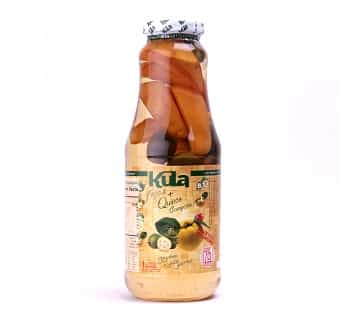 Georgia might be the birthplace of wine, but enthusiasts of sugary drinks and juices won’t be disappointed either (hello, Lagidze Water, Georgia’s lemonade). Then there is kompot, a beverage made by sealing fruits and sugar in a jar. It’s a popular drink throughout Eastern Europe (and not to be confused with the French compote, which is stewed and mashed fruits). In Georgia, jars are opened during the holiday season and throughout winter, when fresh fruits are scarce. Usually, one type of fruit is used per kompot, think cherry, peach, grape, apricot, although mixing them is also an option. Kula, one of the leading producers of kompot, offers several blends in its catalog, some of which are available for order in the US. We recommend quince and feijoa, an unusual mix which will undoubtedly surprise your taste buds and impress your guests. Order here. –Clément Girardot
Georgia might be the birthplace of wine, but enthusiasts of sugary drinks and juices won’t be disappointed either (hello, Lagidze Water, Georgia’s lemonade). Then there is kompot, a beverage made by sealing fruits and sugar in a jar. It’s a popular drink throughout Eastern Europe (and not to be confused with the French compote, which is stewed and mashed fruits). In Georgia, jars are opened during the holiday season and throughout winter, when fresh fruits are scarce. Usually, one type of fruit is used per kompot, think cherry, peach, grape, apricot, although mixing them is also an option. Kula, one of the leading producers of kompot, offers several blends in its catalog, some of which are available for order in the US. We recommend quince and feijoa, an unusual mix which will undoubtedly surprise your taste buds and impress your guests. Order here. –Clément Girardot
Churchkhela
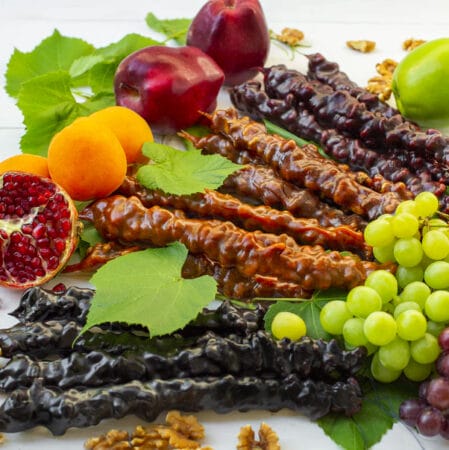 At first glance, churchkhela is neither good-looking nor appetizing. But don’t pay too much attention to its shape and color – churchkhela is known as a delicacy across the Caucasus for good reason. Despite being dubbed “the Georgian Snicker” for tourists, churchkhela is nutritious. It’s made from two key ingredients: nuts (hazelnut or walnut) strung onto a line and dipped into fruit molasses (usually grape, thickened with a bit of flour). Finding a good churchkhela in Tbilisi can be a paradoxically frustrating task. But it’s now easily available in North America through Canada-based Chella. Order here. –Clément Girardot
At first glance, churchkhela is neither good-looking nor appetizing. But don’t pay too much attention to its shape and color – churchkhela is known as a delicacy across the Caucasus for good reason. Despite being dubbed “the Georgian Snicker” for tourists, churchkhela is nutritious. It’s made from two key ingredients: nuts (hazelnut or walnut) strung onto a line and dipped into fruit molasses (usually grape, thickened with a bit of flour). Finding a good churchkhela in Tbilisi can be a paradoxically frustrating task. But it’s now easily available in North America through Canada-based Chella. Order here. –Clément Girardot
Tokyo
Oil Spreader Brush
 Visitors to Japan are often impressed by the little things that make life that much easier – baskets under your restaurant seat to keep your bag from getting dirty on the floor, for example. Add that to a food culture of perfectionism (evidenced in widespread picture-ready plating), and you’ll get this handy tool. No more days of awkwardly twisting your frying pan and watching oil run in a disappointing straight line. Instead, apply just the right amount of oil to just the right spot, ensuring even cooking. This is great for gyoza, okonomiyaki or indeed pan-frying just about anything. First spotted in the kitchen of a cooking sensei in east Tokyo, we wondered why this oil spreader hadn’t been in our kitchen sooner. Order here. –Phoebe Amoroso
Visitors to Japan are often impressed by the little things that make life that much easier – baskets under your restaurant seat to keep your bag from getting dirty on the floor, for example. Add that to a food culture of perfectionism (evidenced in widespread picture-ready plating), and you’ll get this handy tool. No more days of awkwardly twisting your frying pan and watching oil run in a disappointing straight line. Instead, apply just the right amount of oil to just the right spot, ensuring even cooking. This is great for gyoza, okonomiyaki or indeed pan-frying just about anything. First spotted in the kitchen of a cooking sensei in east Tokyo, we wondered why this oil spreader hadn’t been in our kitchen sooner. Order here. –Phoebe Amoroso
Onigiri Grill
 The humble onigiri (rice ball) has been described as the equivalent of a Japanese sandwich. That makes the yaki (grilled) onigiri the equivalent of a very satisfying toastie. Simply spread miso or soy sauce on the outside of the rice ball and pop it into this Nambu Tekki Cast Iron Onigiri Grill. Nambu Tekki is traditional ironware from Japan’s northern prefecture of Iwate, renowned for its rust-resistance and even distribution of heat. And that is key for a beautifully cooked yaki onigiri. This grill ensures a crispy, umami-full outer layer that gives way to soft, fluffy rice inside – a mouthful of pure textural bliss. What’s more, it isn’t limited to just rice. You can also cook eggs, pancakes or other perfectly palm-sized dishes with ease. Order here. –Phoebe Amoroso
The humble onigiri (rice ball) has been described as the equivalent of a Japanese sandwich. That makes the yaki (grilled) onigiri the equivalent of a very satisfying toastie. Simply spread miso or soy sauce on the outside of the rice ball and pop it into this Nambu Tekki Cast Iron Onigiri Grill. Nambu Tekki is traditional ironware from Japan’s northern prefecture of Iwate, renowned for its rust-resistance and even distribution of heat. And that is key for a beautifully cooked yaki onigiri. This grill ensures a crispy, umami-full outer layer that gives way to soft, fluffy rice inside – a mouthful of pure textural bliss. What’s more, it isn’t limited to just rice. You can also cook eggs, pancakes or other perfectly palm-sized dishes with ease. Order here. –Phoebe Amoroso
Tokyo Backstreet Box
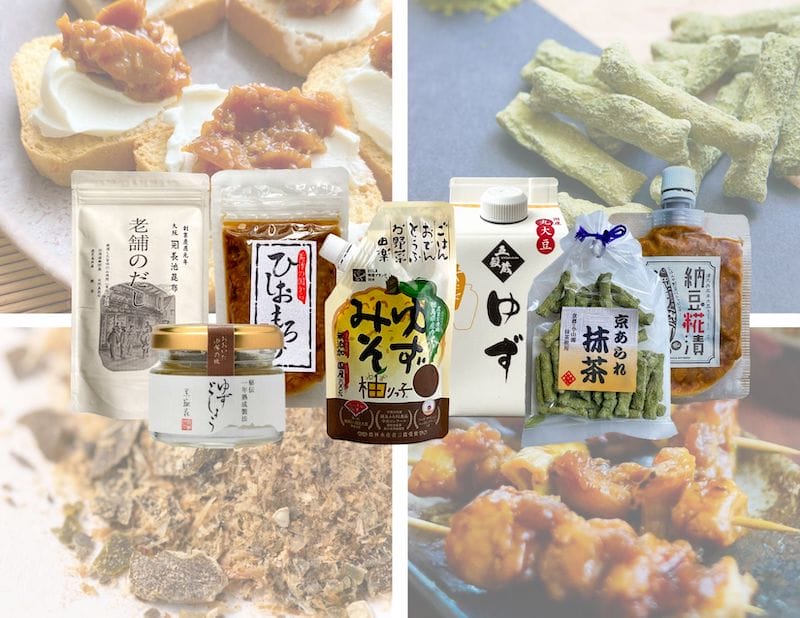 Tokyo may be a megacity of more than 20 million people, but there are neighborhoods where the rhythm of daily life is more accessible, especially when it comes to eating. From old specialty shops to modern department store food courts, in these places the traditions and the communities they nurture are still identifiable. That’s especially the case in Kichijoji, the quintessential Tokyo neighborhood that’s the setting for our food walk and whose everyday food-focused rituals are the inspiration for this Backstreet Box. With it, you’ll be able to recreate some of those rituals in your own kitchen, bringing some of the magical flavor of Kichijoji and Tokyo into your life. Some of the items in the box include: awase dashi, a versatile everyday staple for making sauces and soups, aged yuzu miso, matcha arare (rice crackers) and more. Order here. –Culinary Backstreets
Tokyo may be a megacity of more than 20 million people, but there are neighborhoods where the rhythm of daily life is more accessible, especially when it comes to eating. From old specialty shops to modern department store food courts, in these places the traditions and the communities they nurture are still identifiable. That’s especially the case in Kichijoji, the quintessential Tokyo neighborhood that’s the setting for our food walk and whose everyday food-focused rituals are the inspiration for this Backstreet Box. With it, you’ll be able to recreate some of those rituals in your own kitchen, bringing some of the magical flavor of Kichijoji and Tokyo into your life. Some of the items in the box include: awase dashi, a versatile everyday staple for making sauces and soups, aged yuzu miso, matcha arare (rice crackers) and more. Order here. –Culinary Backstreets
Published on November 15, 2023
Related stories
November 17, 2021
Elsewhere | By Culinary Backstreets
ElsewhereAs travel comes back and all of us begin reconnecting with the world, we would like to start our annual guide with what we believe is the best kind of gift: experiences. If you have a loved one that’s planning to hit the road in 2022, take a look at our culinary walks or trips…
October 5, 2018
TokyoIt’s the end of an era for Tokyo’s Tsukiji Market. Saturday, October 6, will be the last day of operation for the world’s largest fish market, after which it will relocate two kilometers east to a new site on the manmade island of Toyosu. The move has been in the works for years (it was…
November 25, 2021
Mexico CityThe bird that holds pride of place at the Thanksgiving table has just as important a role south of the border. Turkey has actually been a fundamental part of Mexican cooking for centuries: The Aztecs had domesticated the fowl before they had even laid eyes on a chicken. And while chicken has since overtaken turkey…







































